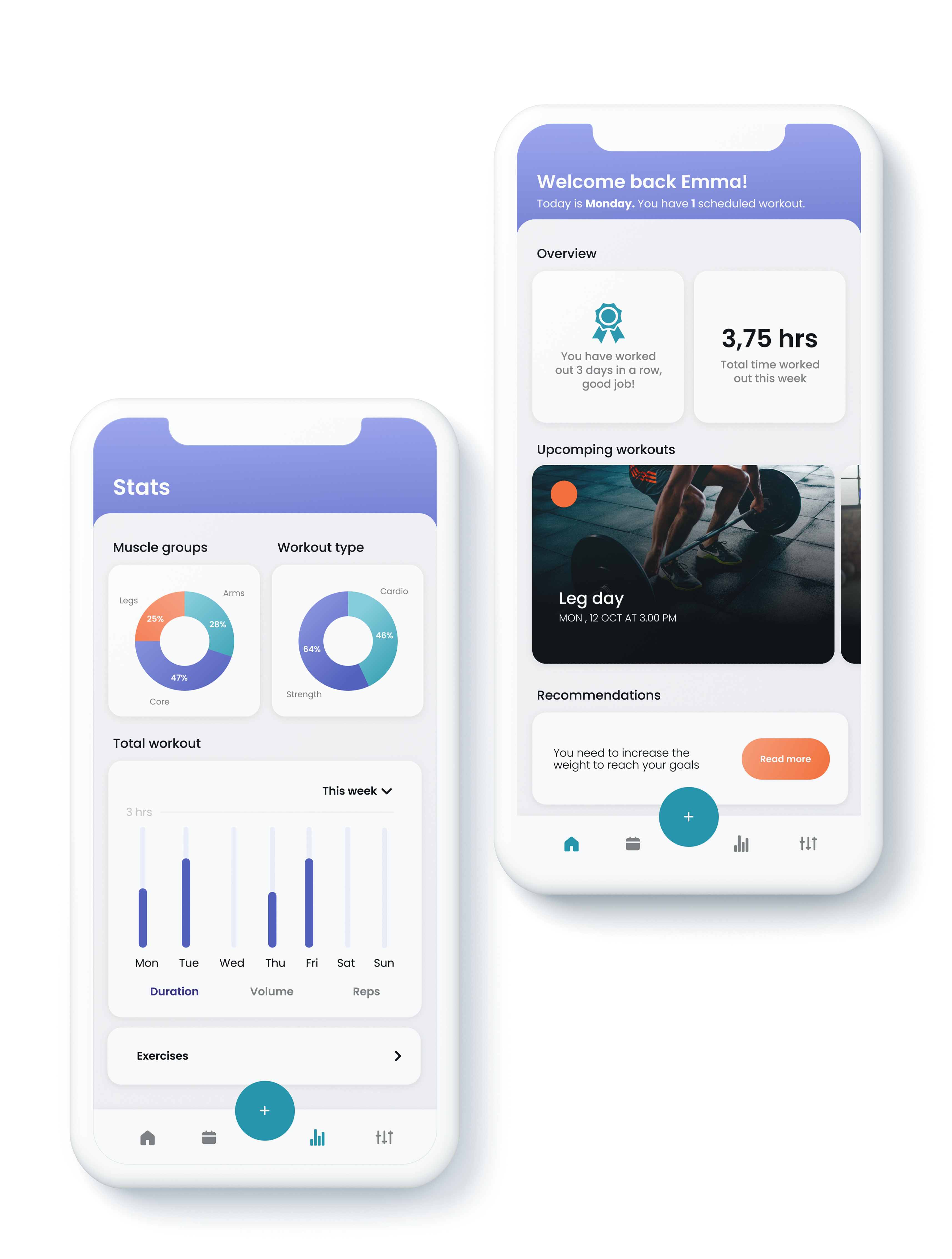GymTrack
A project from the course Human-Computer Interaction with Emphasis on Cognition and Design. The idea is an application that serves as a virtual personal trainer.


Duration
7 weeks

Role
UX-/UI-designer

Tools
Figma, Google Forms
The task
This project was part of the course Human-Computer Interaction with Emphasis on Cognition and Design. The task was to create an idea for an app that enhances some everyday process where human interacts with machine. We decided to create an app that is connected to the equipment at the gym.
The process
The project is based on a design process called The Double Diamond. It suggests that the design process should have four phases. Discover, Define, Develop and Deliver. It's an iterative process where we repeat until we get the desired result. As part of the course we also used conceptual models, interaction techniques, development methods, design support, prototypes, task analyzes and various evaluation techniques.
The first step was to decide what interactive system that needed improvement. The majority of the group memebers experienced remember earlier progress in the gym as difficult. We thought there should exist a system that automaticaly saves sets and reps from equipment at the gym, and thats what we decided to create. We looked into existing apps with similar purpose but didn’t find anything that contained everything we wanted.

Target group
The target group are young people between 15-30 who enjoys working out and are goal oriented. To understand the users we interviewd them and let them answer a survey. In the survey, they were asked about their age, how often they worked out, and if they had earlier experience with gym tracking applications. Depending on if they had experience or not, they were asked different questions. Based on results two personas and an experience map where made.

Brainstorming and prototyping
Based on the findings and the user requirements, new ideas for the application could be developed. As the time for this project was very limited, there was no time to test different variations of lofi prototypes. Therefore we only worked with one version of the app.
After some discussion and brainstorming within the group, we could determine which features was the most appropriate and make the following Lo-Fi prototype. The content of the pages is designed based on the users needs. For example, latest achievement is placed at the top of the home page to motivate the user. We then proceeded by creating the Hi-Fi prototype.
Testing
When the Hi-fi protoype was completed we did several user tests to ensure that our application satisfyed the requierments we specified in the beginning of the process. The test was conducted on three different persons, each given the same tasks. Throughout the experiment the observer was taking notes and after the experiment we used the methods post-testing interview, sentence completion technique and EmoCards.
The final result
The result is app that provides a new and creative way of tracking you progress at the gym in a simple and motivating way. The application contains clear graphs that are easy for the user to interpret. It gives the option to connect the device to the gym equipment and thereby automatically saving the data, as well as a manual option where the user themselves can enter their progress afterwards.

